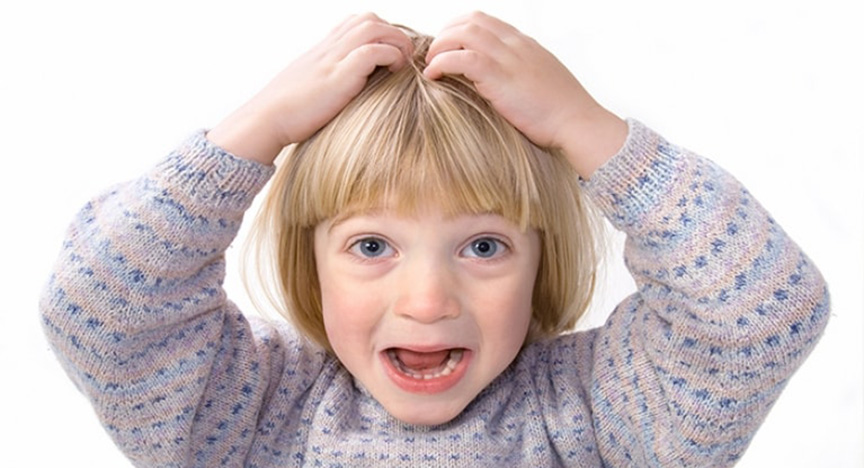
The mere mention of the word ‘nits’ is enough to make your skin crawl and send even the most stoic and calm parent into a spin.
And with good reason – head lice can be incredibly hard to eradicate. What’s more, as any beleaguered mum/dad/chief nit-remover will attest – nits are a widespread problem, with Australian data showing roughly a quarter of all primary school students are reported to have head lice at some point. Interestingly, head lice are more likely to have us scratching in warmer months but outbreaks in autumn/winter are also common, especially as colder weather may encourage closer contact.
While nits pose very little risk to our health, aside from parental frustration at the tricky and lengthy treatment and removal process, there are a few head lice myths we can bust here and now.
Myth No.1 – Expensive nit-busting treatments are best
Don’t believe the pharmaceutical hype – chemical treatments have their place, but many experts say the “comb and conditioner method” is much cheaper, simpler and safer, avoiding the risks of allergic reaction or irritation associated with chemicals.
Basically, thick, slimy conditioner smothers the head lice making it easy to remove them with a fine-toothed lice comb. Coat the scalp and hair with conditioner, leave for about 20 minutes, then comb through small sections at a time, wiping the comb onto a paper towel or baby wipe as you go. Under good light and with a magnifying glass, check the paper towel for small brown critters that may look like sesame seeds (the lice) and white specks (the eggs).
If using chemicals to treat hair lice, follow the strict instructions and never use on babies younger than 12 months, children with inflamed scalps, or pregnant or breastfeeding women. Be especially cautious when using them on children with a history of asthma or allergies.
Myth No.2 – One treatment is enough
Wrong. You have to repeat the hair lice treatment in order for it to be effective. This is because eggs that remain in the hair will hatch some time over the next seven days following treatment, so it’s vital you re-treat your child’s hair after a week. If using the comb and conditioner method, be sure to repeat every second day for ten days. And despite chemical treatments’ big claims – none of them can kill 100 per cent of the eggs.
Dunk all the lice and eggs into hot water to kill them. When you have finished checking, rinse out the conditioner and dry the hair. If you find any adult lice during this time you need to start again from day one, as this indicates a new outbreak.
After 10 days with no new adult lice, you will need to undertake the conditioning and combing at least once a week for four weeks. Make sure you also check other family members for infestation.
Myth No.3 – Wash everything you own
Nits can only live for a short time away from the scalp – and the only means of transmission is by direct head-to-head contact. So, that’s good news, parents: there is no need to spend your precious weekends washing every bit of linen you own amid a nit outbreak. Research has shown lice don’t survive in hats or helmets and there’s no risk of lice being transmitted via toys, furniture or carpets. However, it is best to avoid sharing hair brushes in case there are eggs attached to hairs caught in the bristles.
Myth No. 4 – Head lice only like dirty or fine hair
Nits like warm scalps and hair of all types – they do not discriminate. What’s more, it is not shameful or your child’s fault if they get nits – it’s not due to poor hygiene or hair habits. Nits aren’t fussy at all and can spread in children of both sexes. However they are most common in children aged between four and 11, most likely because of their close contact with each other at school.
Myth No. 5 – Preventative chemical treatment is a cure
No. Treating family members who don’t have head lice achieves absolutely nothing and can actually contribute to increasing insecticide resistance. Try preventative nit-busting measures like tying up or braiding long hair, or spiking up short hair with gel. Your best bet is finding the lice early, which makes treatment easier. Patience and perseverance are key: check your child’s scalp and hair once a week and encourage older children to put a lice comb through their hair in the shower every time they shampoo.
For more information and assistance in managing head lice, contact your local public health nurses, child health clinic, pharmacist and family doctor.
Read more: http://conditions.health.qld.gov.au/HealthCondition/condition/14/165/351/Head-Lice.
What are head lice?
Head lice (Pediculus capitis) are small, wingless, egg laying insects found on the human head. They grow to about 3.5mm (the size of a sesame seed or pin head). Head lice live on the hair and feed by sucking blood from the scalp. They are pale grey in colour before feeding and reddish brown after feeding.
Live eggs (sometimes called nits) are glued to the hair shaft within a distance of 1.5 cm from the scalp. They hatch in 7-10 days as young lice (nymphs). It takes up to ten days for the nymphs to become mature lice and begin laying eggs. Adults are larger than nymphs and a mature female lays up to eight eggs per day.